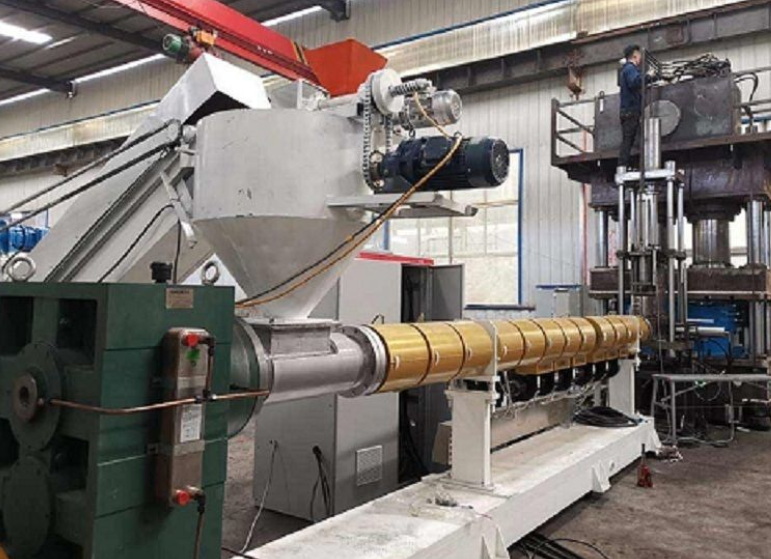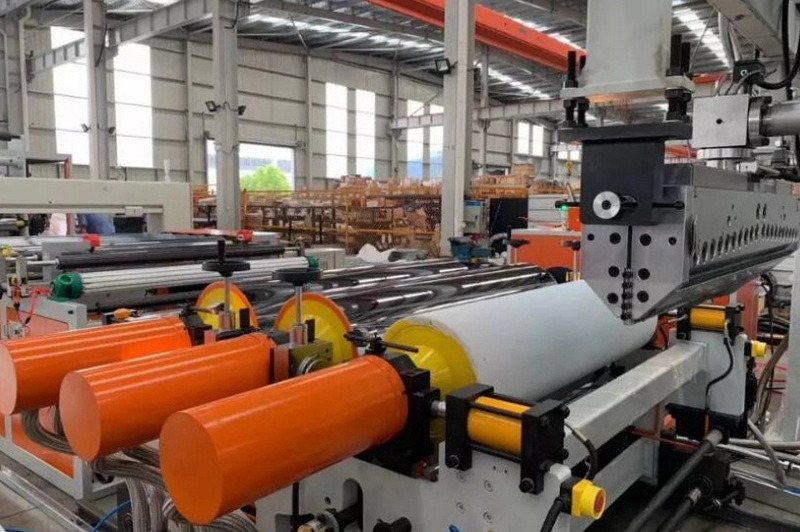Content Menu
● Introduction to Extrusion Die Cleaning
>> Importance of Cleaning
● Types of Extrusion Die Cleaning Equipment
>> 1. Ultrasonic Cleaning Machines
>>> How Ultrasonic Cleaning Works:
>> 2. Dry Ice Blasting Equipment
>>> Advantages of Dry Ice Blasting:
>> 3. Automatic Die Cleaning Systems
>>> Benefits of Automatic Systems:
>> 4. Pyrolysis Ovens
>>> How Pyrolysis Ovens Work:
>> 5. Manual Cleaning Tools
>>> Manual Cleaning Techniques:
● Advanced Technologies in Extrusion Die Cleaning
>> Laser Cleaning Systems
>>> Advantages of Laser Cleaning:
>> Robotic Cleaning Systems
>>> Benefits of Robotic Systems:
● Challenges and Considerations in Extrusion Die Cleaning
>> Environmental Considerations
>> Cost and Efficiency
● Best Practices for Extrusion Die Maintenance
● Conclusion
● FAQ
>> 1. What is the most effective method for cleaning extrusion dies with complex geometries?
>> 2. How often should extrusion dies be cleaned?
>> 3. What are the benefits of using dry ice blasting for extrusion die cleaning?
>> 4. How can automatic die cleaning systems improve efficiency in production?
>> 5. What safety precautions should be taken when handling hot extrusion dies?
● Citations:
Extrusion die cleaning is a critical process in the plastics and metals industries, ensuring the quality and longevity of extruded products. The efficiency and effectiveness of this process depend heavily on the type of equipment used. In this article, we will explore the various types of extrusion die cleaning equipment available, their advantages, and how they contribute to maintaining optimal production standards.

Introduction to Extrusion Die Cleaning
Extrusion dies are precision tools used in the manufacturing of various products, such as films, sheets, and profiles. Over time, these dies accumulate residue and debris, which can lead to defects in the final product. Regular cleaning is essential to prevent this buildup and maintain the die's performance.
Importance of Cleaning
Cleaning extrusion dies is not just about removing debris; it also involves inspecting the die for wear and tear, lubricating moving parts, and ensuring that all components are in good working condition. This process helps extend the life of the die, reduces downtime, and improves product quality.
Types of Extrusion Die Cleaning Equipment
1. Ultrasonic Cleaning Machines
Ultrasonic cleaning machines are widely used for cleaning extrusion dies due to their ability to remove contaminants without damaging the surface. These machines use high-frequency sound waves to create bubbles in a cleaning solution, which effectively dislodge debris from the die surfaces.
How Ultrasonic Cleaning Works:
1. Preparation: The ultrasonic tank is filled with a cleaning solution, typically a mixture of water and detergent.
2. Cleaning Cycle: The die is submerged in the solution, and the ultrasonic waves are activated.
3. Rinsing: After the cleaning cycle, the die is rinsed with clean water to remove any remaining solution.
4. Drying: The die is dried using a hot air dryer to prevent water spots.
Ultrasonic cleaning is particularly effective for dies with intricate designs or small cavities, as it can reach into these areas without causing damage.
2. Dry Ice Blasting Equipment
Dry ice blasting is another effective method for cleaning extrusion dies. It uses dry ice pellets that sublimate upon impact, lifting contaminants off the surface without leaving any residue.
Advantages of Dry Ice Blasting:
- Non-abrasive: Does not damage the die surface.
- Fast: Quickly removes contaminants.
- Environmentally Friendly: No chemicals or water are used.
Dry ice blasting is ideal for cleaning large dies or those with complex geometries, as it can efficiently remove buildup without requiring disassembly.
3. Automatic Die Cleaning Systems
Automatic die cleaning systems are designed to streamline the cleaning process, reducing manual labor and increasing efficiency. These systems often include features like preheated cleaning solutions, automated rinsing, and drying cycles.
Benefits of Automatic Systems:
- Efficiency: Reduces cleaning time and labor.
- Consistency: Ensures uniform cleaning quality.
- Safety: Minimizes exposure to harsh chemicals.
Automatic systems are particularly beneficial in high-volume production environments where consistent cleaning is crucial for maintaining product quality.
4. Pyrolysis Ovens
Pyrolysis ovens are used for deep cleaning of extrusion dies by heating them to high temperatures to burn off stubborn residues. This method is particularly effective for dies with complex geometries or those that have been in use for extended periods.
How Pyrolysis Ovens Work:
1. Heating: The die is placed in the oven and heated to a high temperature.
2. Burning Off Residue: The heat burns off any plastic or carbon residues.
3. Cooling and Inspection: After cooling, the die is inspected for any remaining contaminants.
Pyrolysis ovens are ideal for thorough cleaning but require careful handling due to the high temperatures involved.
5. Manual Cleaning Tools
Manual cleaning tools, such as copper gauze and brass scrapers, are still widely used for detailed cleaning and maintenance of extrusion dies. These tools are effective for removing polymer buildup and inspecting die surfaces.
Manual Cleaning Techniques:
- Copper Gauze: Used for cleaning without scratching the die surface.
- Brass Scrapers: Effective for removing stubborn polymer residues.
Manual cleaning is often used in conjunction with other methods to ensure a thorough cleaning process.

Advanced Technologies in Extrusion Die Cleaning
In recent years, advancements in technology have led to the development of more sophisticated cleaning methods. For instance, laser cleaning systems are being explored for their precision and ability to target specific areas without damaging the die surface. Additionally, robotic systems are being integrated into automatic cleaning lines to enhance efficiency and reduce labor costs.
Laser Cleaning Systems
Laser cleaning uses high-energy pulses to vaporize contaminants, leaving the die surface clean and undamaged. This method is particularly useful for delicate or precision-crafted dies where other methods might be too harsh.
Advantages of Laser Cleaning:
- Precision: Targets specific areas without affecting surrounding surfaces.
- Non-abrasive: Does not damage the die material.
- Efficiency: Quickly removes contaminants.
Robotic Cleaning Systems
Robotic systems are designed to automate the cleaning process further by integrating with existing automatic cleaning lines. These systems can perform tasks such as die handling, cleaning solution application, and drying, significantly reducing manual labor.
Benefits of Robotic Systems:
- Increased Efficiency: Automates repetitive tasks.
- Consistency: Ensures uniform cleaning quality.
- Safety: Reduces exposure to harsh chemicals and hot equipment.
Challenges and Considerations in Extrusion Die Cleaning
Despite the advancements in cleaning technologies, several challenges remain. One of the primary concerns is the environmental impact of cleaning solutions and methods. Manufacturers are increasingly looking for eco-friendly alternatives that do not compromise on cleaning effectiveness.
Environmental Considerations
The use of environmentally friendly cleaning methods, such as dry ice blasting and ultrasonic cleaning with biodegradable detergents, is becoming more prevalent. These methods reduce chemical waste and minimize the environmental footprint of the cleaning process.
Cost and Efficiency
Another challenge is balancing the cost of cleaning equipment with efficiency. While automatic and robotic systems offer significant efficiency gains, they can be expensive to implement. Manufacturers must weigh these costs against the benefits of reduced downtime and improved product quality.
Best Practices for Extrusion Die Maintenance
In addition to regular cleaning, maintaining extrusion dies involves several best practices:
- Regular Inspection: Regularly inspect dies for wear and tear.
- Proper Storage: Store dies in a clean, dry environment to prevent corrosion.
- Lubrication: Lubricate moving parts to reduce friction and wear.
By following these practices, manufacturers can extend the life of their dies and ensure consistent production quality.
Conclusion
Extrusion die cleaning equipment plays a crucial role in maintaining the efficiency and quality of extrusion processes. From ultrasonic machines to dry ice blasting and automatic systems, each type of equipment offers unique advantages tailored to different cleaning needs. By selecting the appropriate cleaning method and incorporating advanced technologies, manufacturers can ensure the longevity of their dies, reduce production downtime, and enhance product quality.

FAQ
1. What is the most effective method for cleaning extrusion dies with complex geometries?
The most effective method for cleaning extrusion dies with complex geometries is often ultrasonic cleaning, as it can reach into small spaces without damaging the die. However, for stubborn residues, pyrolysis ovens may also be effective.
2. How often should extrusion dies be cleaned?
Extrusion dies should be cleaned regularly, ideally after each production run or when a noticeable buildup of residue occurs. For flat extrusion dies, a thorough cleaning and inspection are recommended at least once a year.
3. What are the benefits of using dry ice blasting for extrusion die cleaning?
Dry ice blasting is non-abrasive, fast, and environmentally friendly. It does not leave any residue and is effective for removing contaminants without damaging the die surface.
4. How can automatic die cleaning systems improve efficiency in production?
Automatic die cleaning systems improve efficiency by reducing manual labor, ensuring consistent cleaning quality, and minimizing downtime. They also enhance safety by automating the cleaning process.
5. What safety precautions should be taken when handling hot extrusion dies?
When handling hot extrusion dies, it is crucial to wear heat-resistant gloves and protective gear. Ensure the die is properly supported to avoid accidents, and use lifting devices when necessary.
Citations:
[1] https://www.kemet-international.com/us/products/ultrasonic-cleaning/extrusion-die-cleaning-effective-techniques-for-mold-and-die-cleaning
[2] https://www.guyson.co.uk/finishing-applications/mould-and-die-cleaning
[3] https://amstat.com/products/extrusion-die-soap.html
[4] https://www.nordson.com/en/about-us/nordson-blog/polymer-processing-systems-blogs/2023-04-06-cleaning-your-extrusion-die
[5] https://www.youtube.com/watch?v=_w9JwIsLMXo
[6] https://www.extrusion-training.de/en/reinigung-von-extrusionswerkzeuge-wie-und-womit/
[7] https://www.belcoind.com/automatic-die-cleaning-system/
[8] https://extrusioncontrol.com/products/maintenance-cleaning/
[9] https://www.machine4aluminium.com/top-3-factors-that-affect-aluminum-extrusion-dies-cleaning-and-washing-efficiency/
[10] https://www.omegasonics.com/knowledge-center/article/special-report-high-tech-alternatives-for-extrusion-die-cleaning/
[11] https://www.estevesgroup.com/products/extrusion-tools/faq
[12] https://pcawater.com/en/solutions/process-water/cleaning-dies-aluminium-extrusion
[13] https://www.diecleaningequipment.com
[14] https://alit-tech.com/additive-for-cleaning-of-extrusion-dies/
[15] https://www.alibaba.com/showroom/plastic-extrusion-die-cleaning.html
[16] https://mmgextrusions.com/resources/aluminum-extrusion-die-types/
[17] https://www.vapormatt.com/industries/aluminium-extrusion
[18] https://www.extrusion-training.de/en/reinigung-von-extrusionswerkzeuge-wie-und-womit/
[19] https://cloeren.com/extrusion-dies/die-options/
[20] https://www.schwing-technologies.com/thermal-cleaning/parts-and-tools-to-be-cleaned
[21] https://balloffetdie.com/en/dies-guides-extrusion-cables/extrusion-tools-cleaning/
[22] https://www.prm-taiwan.com/blog/Here-are-10-key-points-to-understand-extrusion-dies_367
[23] https://www.youtube.com/watch?v=42wStrP41ww
[24] https://www.youtube.com/watch?v=PzD3BViNrPc
[25] https://www.youtube.com/watch?v=xed8VHPPRbI
[26] https://www.directindustry.com/prod/monti-engineering-srl/product-192991-2348642.html
[27] https://www.youtube.com/watch?v=HCrmv2uZxCc
[28] https://www.youtube.com/watch?v=_-p1VTrCBAg
[29] https://www.alibaba.com/showroom/cleaning-extrusion-dies.html
[30] https://vixenaquablast.com/aluminium-extrusion-die-cleaning






















